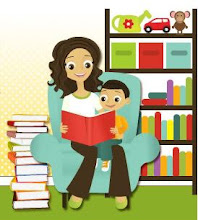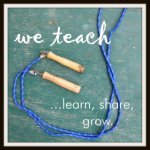- Read the book to yourself first so that you get a feel for the rhythm and tempo. If you are worried about pronunciation, reading the book to yourself before you have an audience of 4 year-olds staring at you! Most preschool books have vocabulary that most adults can read without a big problem. But a good book will challenge children by introducing new words. If you've ever read a great book like Tikki Tikki Tembo
or any book with dinosaurs (like Oh, Say Can You Say Di-no-saur?
), you will know how important it is to familiarize yourself with the text of a new story!
- Hold the book so that the child or children can see the pictures while you are reading. This, of course, is much easier if you have a child on your lap and are reading one-on-one. But most classroom story-times occur in front of a group of children. It takes a great deal of practice to learn to hold the book up for the audience and still read the words! Even though it might be difficult, this is important because children use the context clues in the pictures to comprehend, process, recall, and retell as story.
- Choose books that you will enjoy reading aloud. Your children will hear the genuine excitement in your voice and that excitement is most often contagious!
- Read with expression! Using a monotone is no fun for ANYBODY and you will quickly lose your audience - even if they are "captive." When your audience starts wiggling, poking, and pulling their neighbor's hair, you have lost their attention. Reading with expression engages the children and invites them into the story.
- Encourage children to participate in the story. In some stories that repeat the same text on each page, the children can become a part of the story experience. For example, in The Napping House
each page ends with "where everyone is sleeping." Children will often anxiously anticipate their participation! You can ask children what they think will happen next. Find ways to make the story an ACTIVE rather than a passive experience.
- Be prepared to read the same books again and again. Once you find books that you enjoy reading aloud, it is likely that your children will want to hear them repeatedly. This is a great thing because memorizing stories is often a child's first step to becoming a reader!
- If you need an example of how to read aloud, consider choosing a book that has a CD. Listen to the story with your child and then, when you read it, you will have an idea of how to imitate the rhythm and tempo of the text.
- Don't skip the important parts! Spend some time looking at the cover and illustrations. If it's a book that you are reading for the fist time, talk about the cover, and ask your child to predict what will happen. During the story, refer to the illustrations. Tell the children the author and illustrator's names. These are parts of a book that adults often take for granted and skip over when reading to children but these are important parts of the story.
- To point or not to point? Should you point to the words when you read a story? My opinion is that you should point some of the time, but not all of the time. The very first time you are reading a story, I think you should just let the story flow naturally. On future readings, you can certainly point to the words as you are reading so that children begin to make the connection between spoken and written words. When you are pointing to the words, slide your finger across the sentence as you read; avoid pointing to each word one by one as this tends to create a choppy speech pattern. Once children know a few words by sight, point them out in the stories that you read.
- Have fun!
Related Links
My Favorite Books to Read Aloud
Raising Playful Tots: Making Literacy Connections (podcast)
Tips for Choosing Books for Preschoolers



































